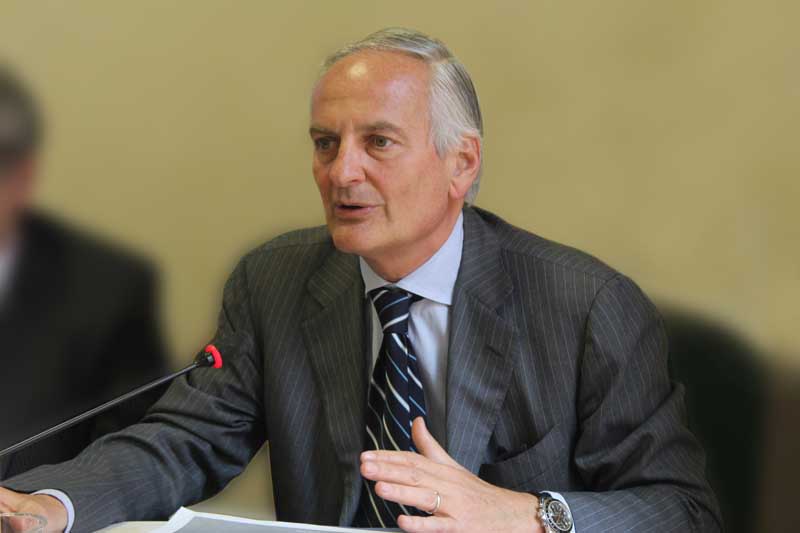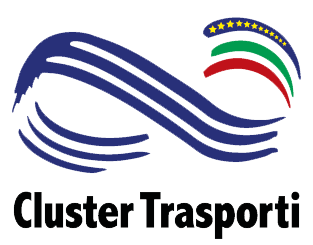Cascetta: focus on technological innovation for sustainable logistics

Published 16 March 2022
“The first challenge of the energy transition, for a true sustainability of logistics, is to make road transport less polluting. Or rather, to make road transport happen in a less polluting way “.
These are the words of Ennio Cascetta, president of the National Transport Technology Cluster and lecturer at the Universitas Mercatorum, proclaimed during the meeting about Decarbonisation and circularity in industry and logistics. How to do it and who pays? which took place as part of the 2022 edition of Shipping, Forwarding & Logistics meet Industry, an annual event dedicated to the encounter between the world of logistics, shipping, transport, and the world of the Italian productive economy.
The session underlined the state of the energy transition to which the transport and logistics sector is called to give answers in the context of achieving the emission reduction targets imposed by Europe, trying to give indications on possible tools to pursue sustainability without blowing up costs.
The interventions highlighted the introduction of innovative processes – among which digitization plays a key role – with which to optimize delivery and shipping operations based on the experience of transport and shipping operators and port and interports management authorities.
Among the speakers, Silvia Moretto, president of FEDESPEDI, Mario Dogliani, president of SDG4MED, Antonella Querci, innovation director of the Port System Authority of the Northern Tyrrhenian Sea, Francesco Querci, president of the central Tuscan Interport (Prato), who told how much is being done and how much leeway there is still in view of action at a systemic level to set up interventions that can really affect the reduction of emissions and for a truly sustainable transition in the logistics, shipping and transport sector.
Which are the real decarbonization prospects for Italian logistics?
Freight transport continues to grow – added Cascetta – it has grown a lot even during the pandemic, despite the collapse of GDP and continues in this trend. Also, but not only, thanks to the explosion of e-commerce.
In light of this state of affairs, then, what are the real prospects for decarbonization in the freight and logistics sector? And what can technological innovation do, in general, and in this sector in particular?
Freight transport is growing, and will continue to grow, but unfortunately, we know very little about freight transport today. We do not know, for example, the real breakdown between the various modes of transport. The breakdown by vehicle / km, tons / km, billions of tons / km reported by official sources (Istat and National Transport Account) are, according to the studies and research that the Cluster is carrying out, less than half of the real ones .
In fact, about 350 billion tons / km on the road are compared to 21 tons / km for railways. These are clearly not comparable numbers. Among other things, by analyzing the structure of the demand for road transport mobility, it emerges that 90% of journeys are less than 300 km, therefore not transferable to other modes. And it also emerges that Italy has a production structure that is practically hinged on its motorway network: 70% of the manufacturing plants in our country are located less than 10 minutes from a motorway exit.
Rail transport is fundamental for some market segments and for the country, first of all for the crossing of the Alpine arc and for intermodal connections with large ports but for the production and consumption structure of our country the framework won’t be able to change much.
Technological innovation
Considerations with respect to the peculiarities of the transport and logistics sector in Italy then lead to a second, closely related element, technological innovation.
Ecological innovation on energy carriers in the field of freight transport – explained Cascetta – is much more backward than what happens for cars. So hydrogen, in its various forms, rather than gas / hybrid, biomethane, are still technologies that are all potentially usable. There is no shared path that goes towards one of these in particular. The contribution that each of these technologies can give and what are the introduction times in the fleet is not yet defined. Even if we went ahead with a 4% renewal of the park per year – and this is an optimistic estimate – it would take forty years to replace 100% of the park.
So it is quite clear that even if we had the technology that would lead to zero impact road transport – and we don’t – we would not see this effect in the medium and short term as Europe requires, so not in 2030, but not even in 2050.
There is therefore a lot to do on optimization and from this point of view, we can certainly intervene on the fact that “air is the most transported good”. In other words, we have a very inefficient system in the composition of loads, especially on the road. An inefficiency certainly due in part to the structure of the transport demand, to territorial imbalances, not only on long journeys and not only as regards the north-south routes. This is a problem of supply structure – too many companies that are too small – and of a still very primordial use of technologies. Here, on the other hand, technology can really do a lot, but advanced technologies usually require structured companies.
Italy is still quite behind, compared to the USA, for example, as regards load composition services, the optimization of supply-demand matching platforms, as happens with MaaS (mobility as a service), therefore a platform where transport supply and demand meet, we propose an optimization of the load at a cost that is lower but which requires a little more time for delivery and this leads to much more significant filling coefficients. Services that have been renamed FaaS (freight as a service) and this is one of the areas in which there is a lot of room to intervene.
Another is the development of connection and autonomous driving technologies. As far as road vehicles are concerned, there are many experiments that go in the direction of Truck Platooning.
With connected trucks, this practice that allows you to take advantage of the aerodynamic wake effect of the truck in front and save energy could be carried out in a completely safe way.
There are various levels from 1 to 3 depending on whether there is less and what the drivers do on board, with the concrete possibility of saving energy, pollution and economic resources, making a less expensive transport a concrete possibility.
“These – concluded Cascetta – are concrete solutions with a view to more sustainable logistics that cannot pass through a modal rebalancing. Those who continue to argue that a modal rebalancing of logistics is needed with a strong push towards intermodality is not yet well aware of the real numbers of the problem. This is not exactly a good start for the transition to a sustainable perspective of Italian logistics”.


